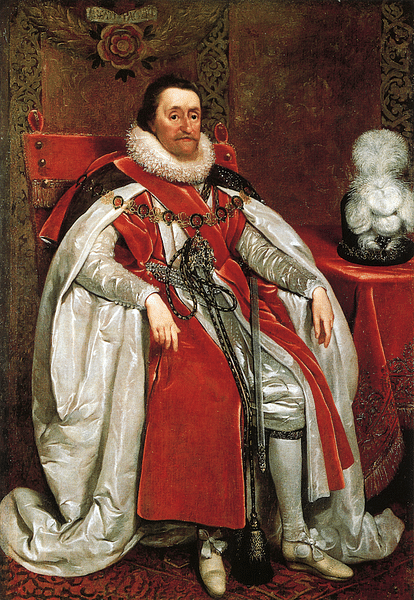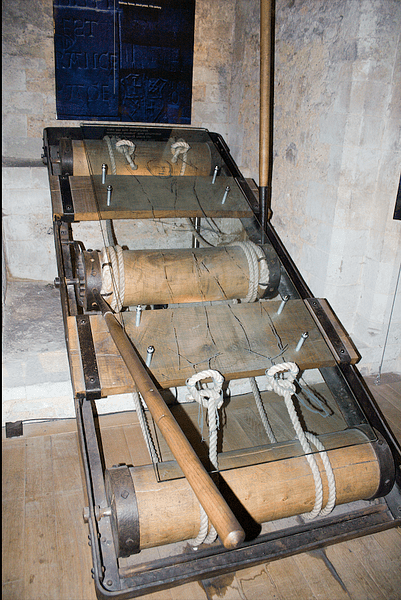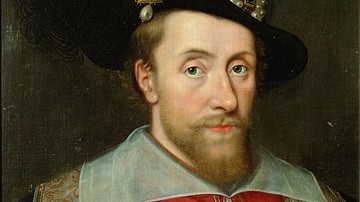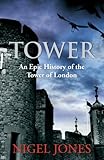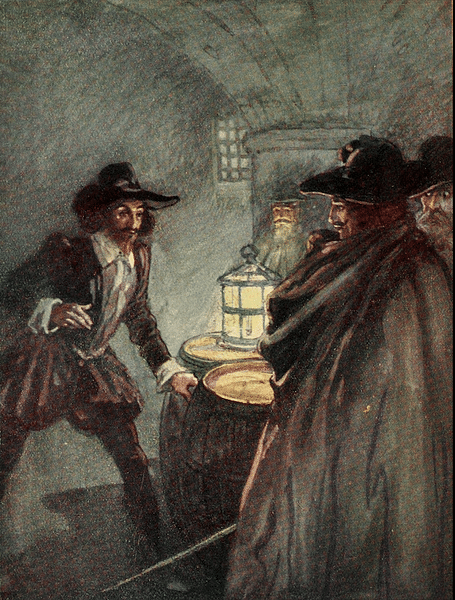
The 1605 Gunpowder Plot was a failed attempt by pro-Catholic conspirators to blow up the English Parliament on 5 November and kill King James I of England (r. 1603-1625) and the entire nobility along with him. The plot was discovered when one of the conspirators sent an anonymous letter warning a relative who would have been present in the parliament.
At midnight on 4 November, Guy Fawkes was apprehended beneath Westminster Palace before he had a chance to light the 35 barrels of gunpowder stored in the palace’s cellars. Under brutal torture in the Tower of London, Fawkes revealed the names of his fellow conspirators and their plans to cause such chaos that a coup d’etat by forces favourable to the Catholic cause would be possible. Rounded up and also tortured, the guilty parties, including Guy Fawkes, were executed by the gruesome method of being hanged, drawn, and quartered, a fate reserved for those guilty of treason against the Crown. Bonfires were lit on the night of 5 November to celebrate the failure of the plot and this tradition continues today in an occasion on that date variously known as ‘Bonfire Night’, ‘Guy Fawkes’ Night’ or ‘Fireworks Night’.
Catholicism in England
Elizabeth I of England (r. 1558-1603) had encouraged the Protestant religion in her kingdom, and this policy was continued by her successor James I of England, who was also James VI of Scotland (r. 1567-1625). James had been brought up a Protestant, but a further blow to extreme Catholics hoping to restore that faith as the primary religion in England was dealt on 18 August 1604. On that date, a peace treaty was signed in London which finally ended the war between England and Catholic Spain. The last straw was a new wave of laws against practising Catholics, or rather the resumption of such laws that had been in place during Elizabeth’s reign. Restrictions on Catholics included the prohibition of holding mass and an obligation to attend Anglican communion services or face a stiff fine.
A group of extremists now decided to make one final throw of the dice to try and bring England back towards the Catholic religion. Their plan was nothing short of a mass-murder event, which would obliterate the monarchy and government, creating a political vacuum, which pro-Catholic forces could then exploit to take over the state. The ring leader of the conspiracy was Sir Robert Catesby, a fiercely Catholic nobleman. A gang was carefully assembled consisting of Catesby, Christopher and John Wright, Robert and Thomas Winter (aka Wintour), Thomas Percy, and Thomas Bates. All of these men were Catesby’s relatives except for his servant Bates. Added to the group were two zealot Jesuit priests - Father Garnet and Father Greenaway - in order to give the outlandish project a wafer-thin veneer of Church backing.
The plan was beautifully simple: blow up the entire English Parliament when the king opened the session on 5 November 1605. Present would be the members of parliament, the lords, judges, the king’s council, and the monarch himself. What was required, then, was a massive quantity of gunpowder and an additional member to the gang: a die-hard, battle-hardened Catholic mercenary to light the fuse. Guy Fawkes, real name Guido Fawkes, was the man and he entered the stage of history with what might only have been a cameo role but it was one which would gain infamy that has lasted for four centuries and counting.
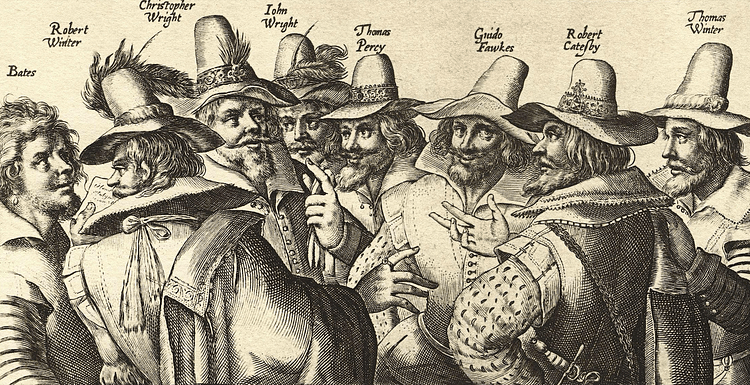
The Cellars of Parliament
The conspirators needed to somehow get under the parliament building and plant their gunpowder there for maximum explosive effect. At first, a small house was occupied, and from it, a tunnel was dug towards Westminster Palace, but the gang soon realised that it was actually much easier to get under Westminster Palace than they had imagined. It was possible to rent an empty coal cellar in the depths of the building, and this they did, taking one right under the Lords' chamber. Inside this cellar 35 (or 36) barrels of gunpowder were deposited, hidden as an extra precaution under a massive pile of chopped firewood.
Gunpowder was still a relatively new weapon in Europe at the time, and an expert was needed who could prepare suitable fuses to set the barrels off to their most devastating effect. Guy Fawkes was just such a man with his long experience fighting for the Spanish army as a mercenary in the Netherlands. To ensure the blast was even more deadly than using just powder, hundreds of metal bars were added to the barrels, which would rip through the structure of the building. Fawkes was set to guard the powder until the big bang.
The Letter
Everything was going to plan for the conspirators until one of them, one Francis Tresham, and perhaps one or two of the others, began to wonder if it was morally acceptable to blow up good Catholic peers along with everybody else. Almost certainly it was Tresham who decided to write an anonymous letter to his brother-in-law, the Catholic Lord Mounteagle. This was the action upon which the whole scheme collapsed. The letter, delivered to one of Mounteagle’s servants for the attention of his master, was a cryptic warning: "They shall receive a terrible blow this Parliament, and yet they shall not see who hurts them" (Jones, 280).
Instead of heeding the warning and saving his own skin, Mounteagle showed the letter to Lord Robert Cecil, who in turn showed it to King James. Mounteagle would later receive a generous pension for his actions. The king, after a troubled childhood of regents, plots, and one kidnap, was forever on the watch for attempts against his life - he often wore specially padded clothing as proof against a knife attack - and so he did not need much convincing that the plot was real and required immediate investigation. This was still ten days before the conspirators planned to explode their gunpowder but, keen not to let the ringleaders escape justice, the authorities played it cool and waited until the 4 November to search the palace cellars. The conspirators found out about the letter, but Tresham tried to convince his fellows that he had not sent it. As the days ticked down to the 5th, there was still no reaction from the authorities and so the gang believed the letter had been either misunderstood or dismissed as a hoax. The conspirators then left Tresham and Fawkes with the gunpowder and departed London to prepare for the uprising they planned in the Midlands once Parliament had been destroyed.
The Discovery
On the afternoon of 4 November, the king authorised the search of the palace’s cellars to begin. The coal cellar was approached, and at the door was a man with a lamp, Guy Fawkes (his lamp is today in Oxford’s Ashmolean Museum). Asked what he was doing there, Fawkes said that his name was John Johnson (actually the servant of the conspirator Thomas Percy). Fawkes unlocked the cellar and allowed the searchers inside. Seeing the pile of wood and not bothering to check it thoroughly, the searchers moved on elsewhere. Having discovered nothing, the search party duly reported to the king. Mention was made of John Johnson and his pile of wood and, pressed for a description, Fawkes was described as "a very bad and desperate fellow…up to no good" (Jones, 280). James did not like the sound of that, and he ordered another search to be carried out later in the evening, and this time with a number of soldiers present. When the coal cellar was investigated for a second time around midnight on the 4th of November, Guy Fawkes was still hanging around. Once again asked to unlock the cellar, the search party this time dug deep into the woodpile and found the barrels of gunpowder. Fawkes was himself searched, and in his pockets were a watch, a slow-burning cord to act as a fuse, and a touchwood to create a flame; it was incriminating evidence indeed.
Torture & Death
Fawkes was taken to an audience with the king in Whitehall, where he admitted why he had been down in the cellars with his gunpowder, although he refused to name his fellow plotters. Fawkes was then taken to the Tower of London and kept in a small room to await further questioning. He would soon be acquainted with the Tower’s fearsome Lieutenant, Sir William Wade, a man with long experience of wheedling out information from his captives by any means he saw fit. In this case, the king specifically gave Wade permission to use methods of torture, starting with the milder ones and ending with the rack. There followed ten days of torture, the evidence of which can be seen by comparing the conspirator’s signature at the beginning and end of his ordeal. Fawkes remained unrepentant, stating that the spread of Protestantism required a "desperate remedy for a desperate disease" (Jones, 279). It is likely that Fawkes first had to endure manacles which restricted his movement, then leg breaks - plates which crushed the legs, and perhaps thumbscrews. Presumably still resisting, Fawkes was then laid out on the rack where his limbs were slowly stretched and his ligaments torn from the bone.
Meanwhile, the king had organised a commission to investigate the plot, find out who was behind it, and organise their apprehension. Fortunately for the monarch, the conspirators proved to be lacking in practical intelligence when it came to an armed insurrection. Catesby had travelled to Holbeche House in Staffordshire where he delivered gunpowder to Sir Everard Digby, who promised to gather 50 armed men for the task of taking over the government. The gunpowder had been allowed to become damp and so to dry it out Catesby spread it before a fire. Unsurprisingly, the fire set off the gunpowder and badly burned the conspirators; the Gunpowder Plotters had got their explosion after all. Some of the conspirators now fled the scene while those who remained, including Catesby, were surrounded by government forces on 8 November. In a wild shoot-out, many of the guilty men were killed, including Catesby, while others were seriously injured. In light of what was to come, those who were killed by a musket ball had been lucky.
Back in the bowels of the Tower of London, Fawkes’ resistance broke, and he did eventually reveal the names of the conspirators. All of these were rounded up, including the two Jesuit priests, and only one, Hugh Owen escaped England and justice. All were taken to the Tower and tortured just as Fawkes had been. Tresham died during his ordeal, but for the rest, worse was soon to follow. First, though, and having confessed their guilt, the conspirators were put on trial in January 1606 in Westminster Hall. All were unrepentant of their proposed crime except Bates. Sentence was passed; the terrible punishment reserved for those found guilty of treason: to be hanged, drawn, and quartered.
The death sentences were carried out over two days on 30 November and 1 December. Each was dragged by their heels behind a horse through the streets of London. Each man was then hanged until a breath short of death. Taken from the scaffold and still alive, each man was then castrated, his bowels were drawn from his body, and he was beheaded. The final act was to cut the body into quarters. Some tried to avoid the latter part of the execution by jumping from the scaffold in an effort to break their own neck. Guy Fawkes succeeded in doing just that, but his lifeless body was, nevertheless, given the full treatment.
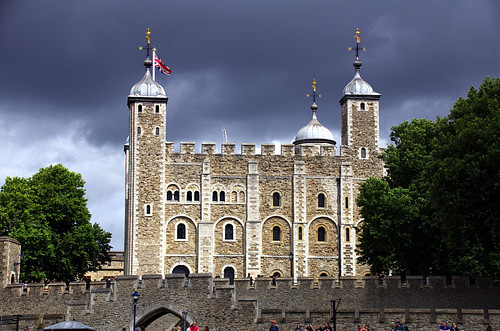
Legacy
The Gunpowder Plot failed and fuelled the anti-Catholic and anti-Popery sentiment in England. Much like anti-Communist feeling in the USA after WWII, the plot ensured that Protestants became paranoid about Catholics and made Anglican church leaders determined to repress that faith. Paintings of the event, along with the defeat of the Spanish Armada, were hung in churches and annual services of thanks held.
To celebrate the foiling of the plot, the authorities encouraged commoners to light bonfires on the evening of the 5th of November, and this they did, starting a tradition which continues to this day in England and several other countries. Now called ‘Bonfire Night’, ‘Guy Fawkes’ Night’ or ‘Fireworks Night’, bonfires are lit and fireworks let off each 5 November. There was a long-standing tradition to make an effigy of Guy Fawkes, called simply a ‘guy’, and children would endeavour to make their best effort and ask people for a donation by either presenting their guy in the street or visiting people’s homes and asking for ‘a penny for the guy’. Then the effigy was thrown upon the bonfire in the evening. The tradition of making a guy has become less common nowadays, but Guy Fawkes lives on in other ways, notably in such expressions as ‘a tough guy’ after his long resistance to torture in the Tower of London. Finally, in recent years, a mask resembling Guy Fawkes has become popular, worn by members of certain protest and anti-establishment groups.
